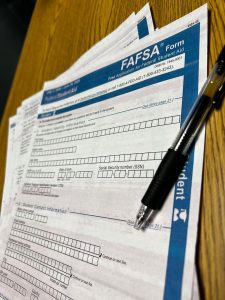The Neptunes … Jimmy Jam … Rodney Jerkins … Michael Zager. The next person to add to that list of well-known producers could be sitting in the Hoot Recordings studio at FAU.
Hoot Recordings’ student producers work with artists on the label to create the best potential products to release to the market.
“The producer molds the music into a direction that is more marketable and feasible,” explains Evan Orellana, co-producer for The People Upstairs.
Each Hoot producer is an FAU student and must pass a policy exam, consisting of studio concepts and music theory, in order to work in the on-campus studio. In addition to knowing the textbook facts of producing, a producer must also be aware of where the music world is heading and be prepared to change that direction if necessary.
“A producer has a choice of either making a quick move to follow a fad or to create a fad,” says Jeff Damisse.
The production process occurs in three stages: pre-production, production and post-production. The student producers work with other Hoot artists and engineers in each step of the music-making process.
“I like to collaborate with the artists when I’m producing,” says Cesar Taveras, producer for The Morrison Leeds Band. “It helps build a respect between the artist and producer.”
The producer’s role in the pre-production stage varies depending on the artist. For a band like The People Upstairs, the writing and rehearsing process occurs within the band without the help of the producer, explains Orellana. For a vocalist, the producer may meet with the artist to “find out where he or she wants to go musically,” explains Chris Corriston, head of Hoot’s production committee.
The production stage occurs in the Hoot studio, where the instruments and vocals are recorded.
The producer will work with the engineer during post-production to create the final mix of the recording. Once the faculty has approved the final product, it goes back to the studio for mastering, explains Taveras.
“Even though you’re a producer, you need to be able to communicate with the engineer and you need to be familiar with the equipment,” says Alexis Terrosa, co-producer for The People Upstairs.
This semester the production committee will also team up with the songwriting committee to build a library of songs for Hoot artists.
It will take time, money and mistakes before Hoot’s student producers achieve the status and recognition that well-known producers enjoy. But if you’re looking for someone who is ready to learn and experiment with music … you can find them sitting behind the board in the Hoot Recordings studio.











